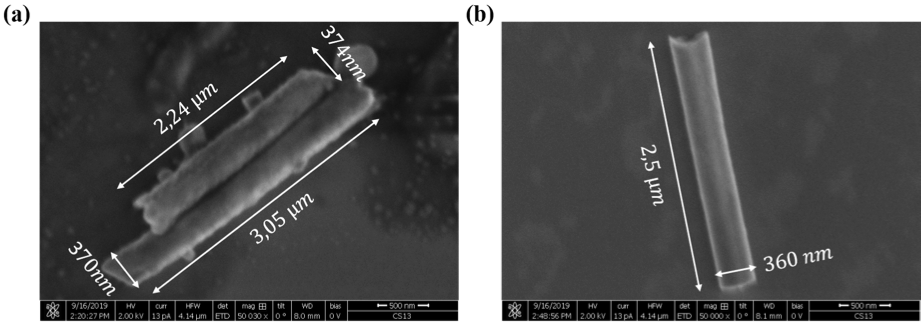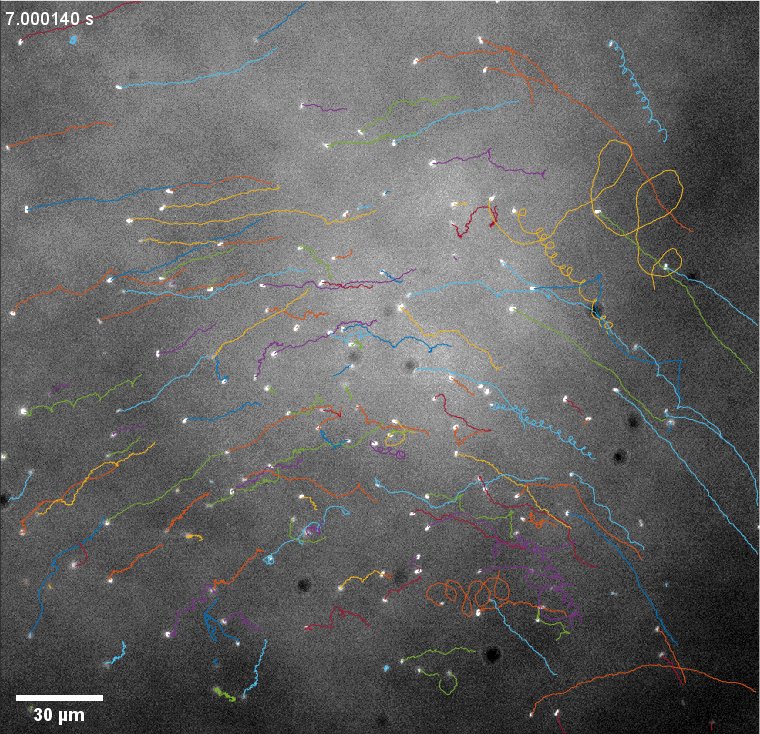Collaborator : Gabriel Dumy (PhD student between 2016 – 2019)
If spherical particles can be gathered in the Acoustic Levitation plane where they can ultimately be trapped to form stable aggregates, this is no longer the case for non-spherical particles. When dealing with metellic nanorods, one can observe a very different behavior : the nanorods are self-propelled, i.e. instead of gathering to form a stable aggregate, the rods move randomly into the levitation plane. This phenomenon is called « self-acoustophoresis ».

SEM pictures of the metallic nanoparticles fabricated using the electrodeposition process described here. (a) two pure gold nanorods are measured. (b) a Au-Ru nanorod is represented, exhibiting a clear asymmetry between its two ends: the bottom one is rather flat, and corresponds to the « top » end during the deposition process, while the other one is concave, with sharp edges.
When the metallic nanorods are subjected to the ARF and reach the acoustic levitation plane, they start moving randomly. A typical example is shown below for gol nanorods. One can see the various trajectories measured in the levitation plane.

Global picture of a tracking of a sample made from Au nanorods propelled by an acoustic frequency of 1.85 MHz at ⟨Eac⟩ = 85J.m−3. Coloured lines represent tracked trajectories.
